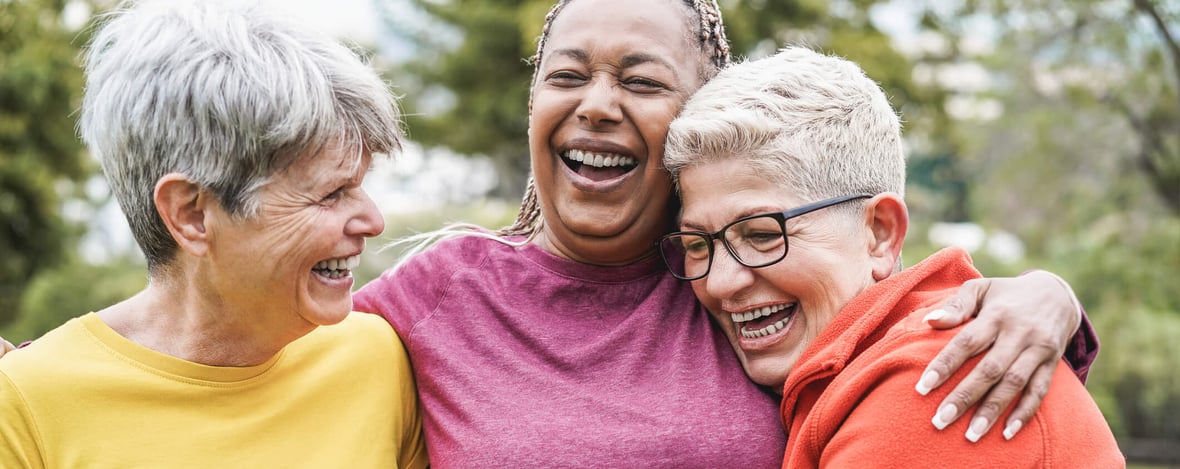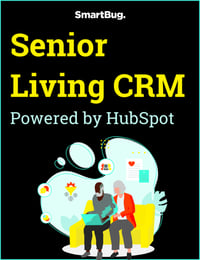
6 Senior Living Marketing Strategies to Implement Now
November 1, 2021
The senior living industry is broad and growing, and Statista estimates that more than one-fifth of the U.S. population will be 65 years or older by 2050. The same report found that there were almost 21,000 senior living units nationwide. This means that senior living communities must go the extra mile to set themselves apart from the rest. How might they be able to do that? With these five senior living marketing strategies—plus a bonus.
1. Use your website to answer top questions.
Many consumers spend time researching online before making a purchasing decision. In fact, 73 percent of people searching for senior housing search a general term, while only 15 percent search directly for the community. Tailor your senior living marketing strategies to help answer the top questions seniors—and their adult children—are asking.
A few of these questions may include:
- What type of living options are available?
- Which levels of care are offered?
- What is baseline pricing?
- What do the rooms and accommodations look like?
- Which amenities are available?
- Which activities can residents take part in?
- Are there transportation options to help get from point A to point B?
The user experience and site content should be designed in a way to encourage visitors to browse the site and easily find answers to their questions.
2. Get social (media).
Social media has become increasingly popular with seniors, with 50 percent of Americans who are 65 and older using Facebook. As a senior living marketer, part of your job is knowing your audience and which channels they are interacting with. Your company’s consistent activity on social media allows prospective customers to become familiar and engage with your brand.
Paid social media advertising, specifically Facebook ads, is another option for putting more targeted messaging in front of those key audiences. This strategy, along with paid search, allows you to provide timely information that addresses your prospects’ pain points and shows how your organization can meet their current needs. Paid advertising can help position your brand as the go-to expert and solution.
3. Explore the benefits of video.
We can all agree that a well-executed video—even just a short clip—is often more effective at getting messages across than written content. It’s no different in the senior living industry. Although videos such as resident spotlights or a virtual tour of your facility are commonly used as a source of brand awareness or as part of the initial introduction to your organization, there are also several benefits of using video for leads further in the funnel.
Videos are mobile-friendly which, as we’ve mentioned, will only continue to be a priority for your audience and make it easier to gain a higher number of views. Video is also a great way to improve your company’s SEO and drive more traffic to your website. Incorporating a call to action into certain types of video content can give prospects access to more of your valuable resources. All of this engagement with video will take leads deeper into the buyer’s journey and bring them closer to becoming your customer.
4. Increase visibility on directory listings.
When seniors and their adult children are in search of a new home, they’re likely turning to search engines to determine which options are available to them. It’s important to ensure that your community is listed on top senior living directory sites, including but not limited to:
- Seniorliving.org
- A Place for Mom
- Assisted Living Directory
- Senior Living Directory
- Caring.com
- SeniorLivingGuide.com
When adding a new listing or updating an existing one, make sure all of the information is displayed properly, including the name of the community, address, phone number, pricing, and levels of care. You’ll also want to pay extra attention to the reviews on these profiles. Ask existing residents and their children to write a nice review, and ensure you’re replying to all reviews–positive and negative.
5. Provide a more personalized experience.
One of the many benefits of using landing pages and collecting data on your prospective customers is the ability to offer them a more personalized experience with your brand. The more you know about each contact, the more you can tailor what you put in front of them.
Research suggests that 80 percent of customers want more personalization, and many would show more loyalty to a brand that clearly demonstrates knowledge of who it is. The key to personalization is getting accurate data and using it correctly; it’s better to have no personalization than to use the wrong name or something that feels obviously automated and negates the personal connection you were aiming for.
6. Local SEO for Senior Living will help communities connect with potential residents
Local SEO helps senior living communities connect with potential residents in their local area. It includes optimizing the business's website for local keywords, setting up a Google Business Profile, and getting listed in local directories.
To improve local search rankings, senior living communities should claim their Google Business Profile and ensure that the business's contact information such as address, hours, telephone number and services is accurate and consistent across all online platforms, such as their website and social media.
Customer reviews hold significant weight in local SEO. Positive reviews can improve a senior living communities search rankings and visibility, and attract more customers. Therefore, communities should encourage satisfied residents to leave reviews on your Google Business Profile and other relevant platforms.
Lastly, monitor and track local SEO metrics to measure the success of the community's SEO efforts. By tracking metrics like website traffic, search rankings, and customer reviews, senior living communities can identify areas for improvement and adjust their SEO strategy accordingly.
Tie it all together with content marketing.
What’s at the core of making all of these senior living marketing strategies successful? Content. From your website to social media to lead generation and beyond, if the messaging doesn’t connect with your personas, the rest of your efforts will fall flat. Your content marketing strategy is responsible for making the first impression of your brand a lasting one.
Ready to learn more about creating an unstoppable content marketing strategy with measurable results? Download SmartBug’s “Ultimate Content Marketing Checklist for Senior Living Pros” for a helpful guide to developing resources and, more importantly, getting that content to convert visitors into customers.

HIPAA-Compliant Data Storage, Easy Occupancy Management, and More
Ready to Transform Your Senior Living Operations?
About the author
Karleigh Fantacone is a Marketing Strategist at SmartBug, based in Columbus, OH. She has both in-house and agency experience managing and executing all aspects of digital marketing campaigns. Her design background influences her creative, detail-oriented approach to her work overall, and she loves diving into all types of HubSpot configurations with her clients. Read more articles by Karleigh Fantacone.





